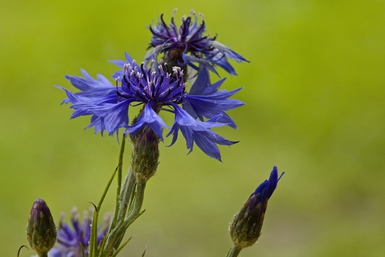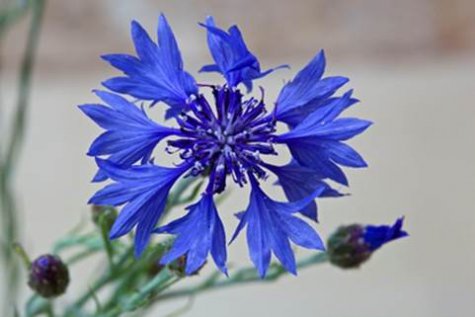Rare weed - cornflower
Text and photo Tiit Hunt, rmk.ee
Translation Liis
Cornflower
Cornflower Rukkilill Centaurea cyanus
Driving through different parts of Estonia and choosing roads passing fields – a surprise emerged: cornflowers were growing or flowering only in a very few fields. It seems that quite a number of orchid species are more frequently to be seen nowadays than our beloved cornflower.
Today’s plant protection means have managed to suppress this previously common ”field weed” so successfully that just seeing a blue flower in a grain field or a fallow field makes one hit the car brakes, to rush into the field with the camera
Our national flower is actually an ancient foreign species that once arrived in our territory with cereal seeds, possibly already when cultivation of fields started.
As national flower, from 1968 onwards, it belongs only to Estonia but the cornflower has been used as a symbol in several other countries such as Germany, France, Austria, Sweden and Finland. Be it then as the sign of a party, landscape, hope, social liberalism or a memorial to the end of the First World War.
The once troublesome weed has been used as a medical herb as well as a plant for dying. Besides the blue flowers, varieties with white, pink or red flowers have been bred for ornamental gardens. These colours sometimes escape into nature but cannot surpass the unique beauty of the sky-coloured flowers. Cornflowers, belonging to the Centaurea genus, are used in natural gardens as undemanding, self-seeding and long lasting flowerers that can be eaten and have a long life in a vase.
A cornflower bloomed in a fallow field near Tuudi in Lääne county










